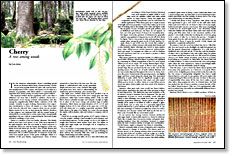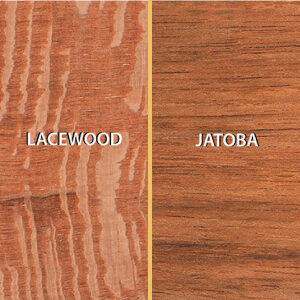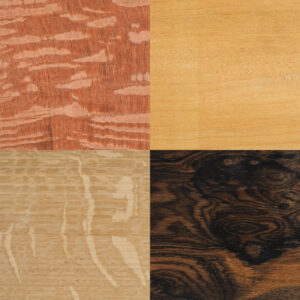
Synopsis: Jon Arno says tradition affects the mystique behind black cherry in furnituremaking. Magnificently skilled Shaker craftsmen could use the natural beauty of cherry to create a piece that’s exceptionally appealing without compromising functional design with bric-a-brac. Arno explains its beautiful figure, its moisture and working characteristics, and compares its cellular components with other common woods. It does best if left alone, not cultivated, so it’s dependent on opportunistic natural events. And it produces cyanic acid; Arno explains how to handle this.
To the American cabinetmaker, there’s something special about our domestic black cherry, Prunus serotina. It’s the second most popular hardwood (after oak) used by furniture manufacturers in this country. And if price is to be taken as a measure of popularity, only black walnut is consistently more expensive than cherry among our major native-grown timbers.
The mystique behind cherry’s popularity (and I can’t deny it influences me more than it should) is tradition. Cherry was a much-prized wood among Colonial cabinetmakers and also among the magnificently skilled Shaker craftsmen of the 19th century. Certainly, its great working characteristics were important considerations to these old masters at a time when hand tools were the only tools. But, I suspect, there was yet another, ulterior motive for its use, at least among the Shakers: Members of that religious sect disdained frills, and the natural beauty of cherry allows a woodworker to create a piece that’s exceptionally appealing to the eye—without compromising the functional design with fancy moldings or bric-a-brac.
Cherry is a member of the rose family, Rosaceae. This family, with its more than 3,000 species, is one of the most important in the plant kingdom. Were the rose family to vanish tomorrow, it would take with it not only the beauty and fragrance of the rose, cherry wood and cherry pie, but also a host of other flowers and edibles—plums, peaches, apples, raspberries, almonds and many, many more. The so-called “rosewoods” of commerce, by the way, come from tropical species of the genus Dalbergia, which is a member of the pea family, Leguminosae. None of these rosewoods is close kin to the true rose. The rose family is well-endowed with woody perennials, shrubs and even trees, some of which—like apple and plum—have been used in cabinetmaking for small items and woodenware since ancient times.
Like apple trees, orchard cherry trees don’t produce a lot of usable wood because much of the tree’s energy goes into fruit production, rather than toward making timber. Only our wild black cherry is plentiful enough—and energetic enough—to fight for its place in the forest canopy and produce logs of usable dimensions. Black cherry can attain diameters of 4 ft. to 5 ft. and heights of about 100 ft., but seldom in the same tree. A 3-ft.-dia., 80-ft.-tall cherry tree is a mighty respectable specimen. While black cherry is the giant of its family, it’s a mere also-ran among the maples, yellow-poplars, oaks and walnuts it competes with in the wild.
From Fine Woodworking #66
For the full article, download the PDF below:
Fine Woodworking Recommended Products

DeWalt 735X Planer

Ridgid R4331 Planer

AnchorSeal Log and Lumber End-Grain Sealer






















Log in or create an account to post a comment.
Sign up Log in